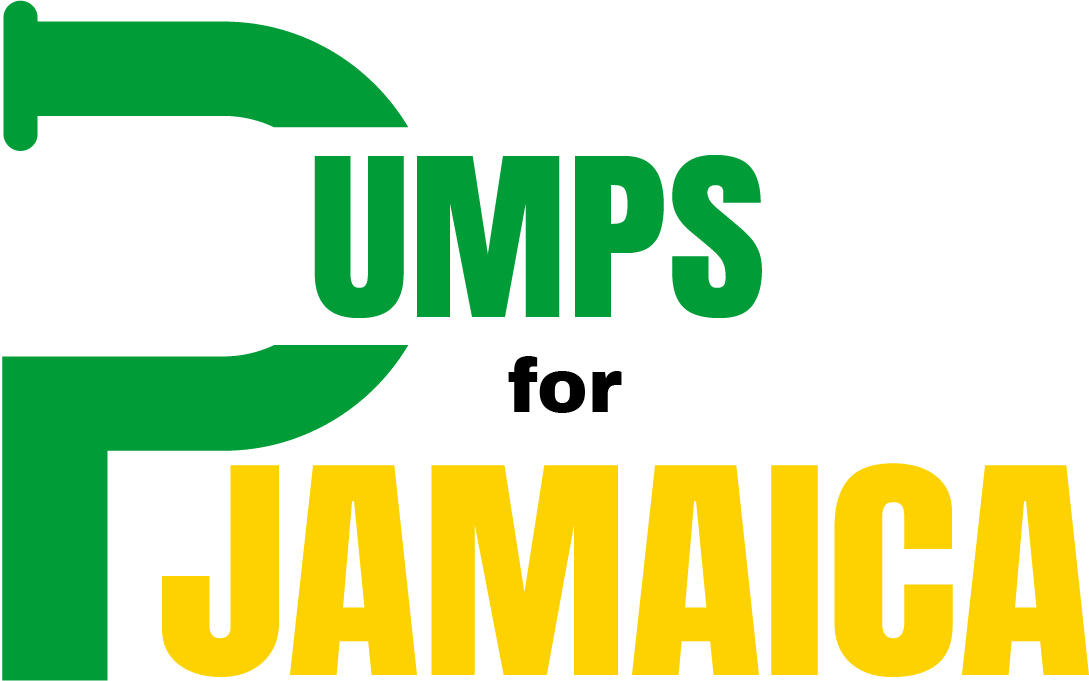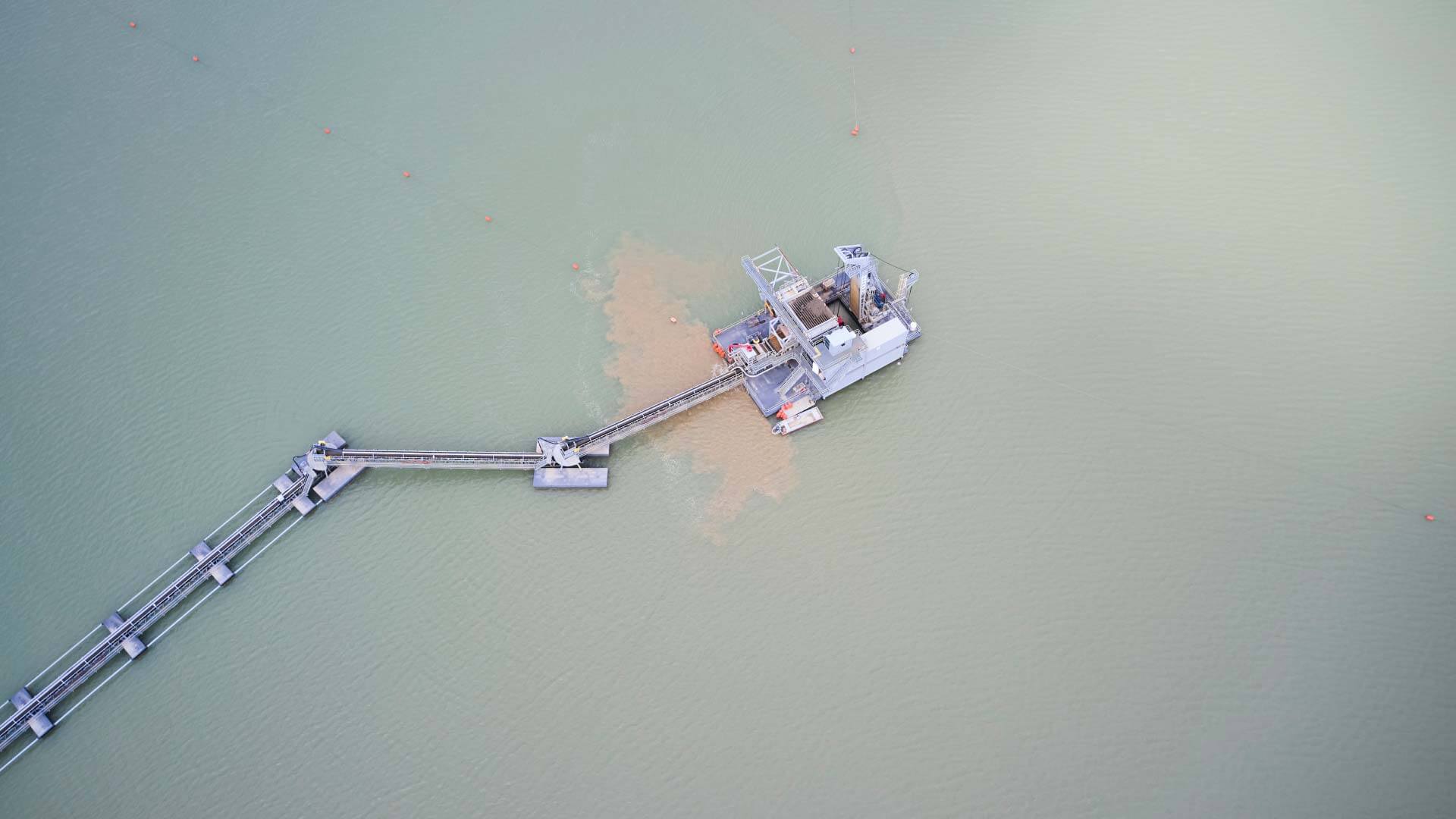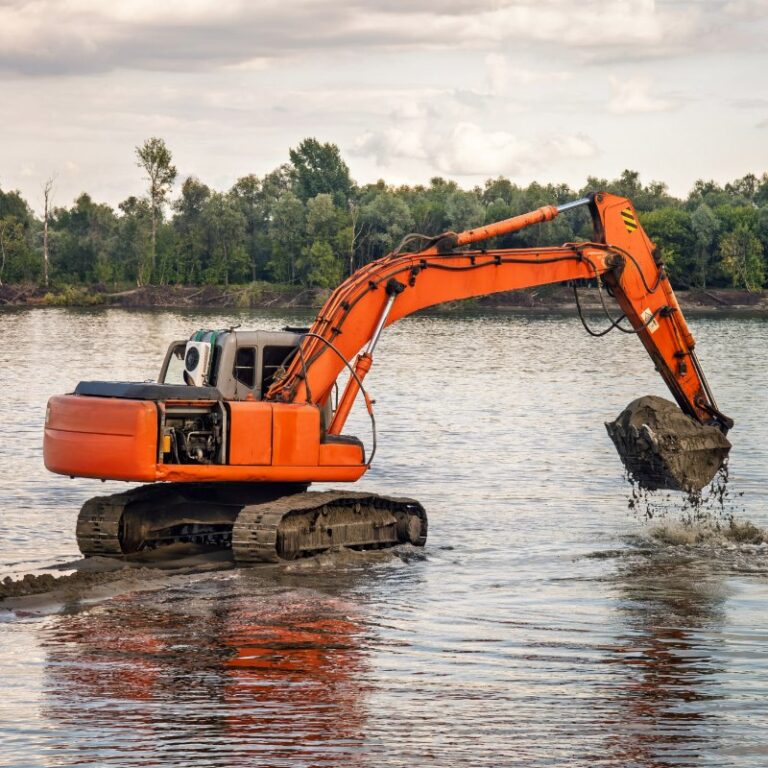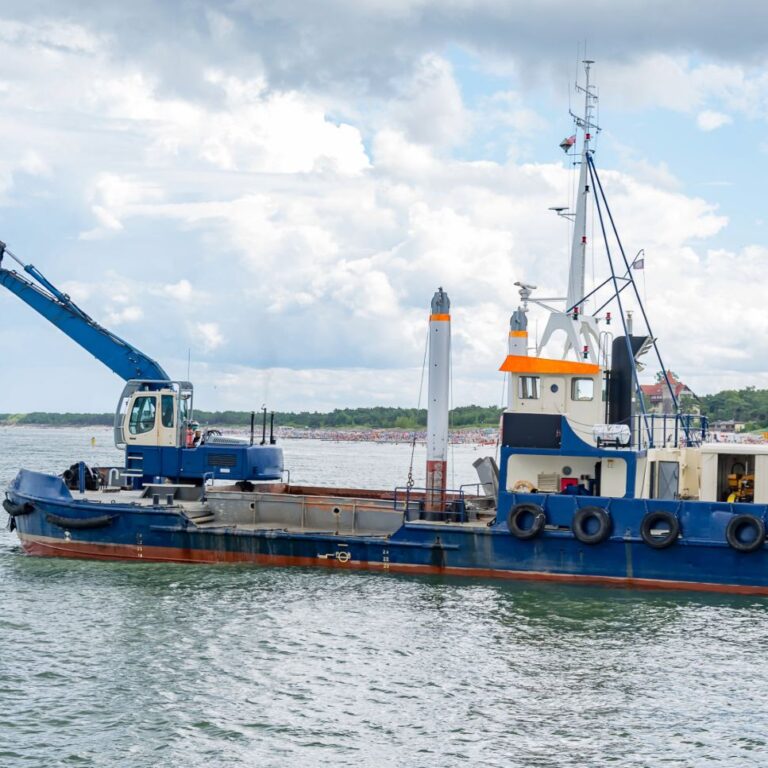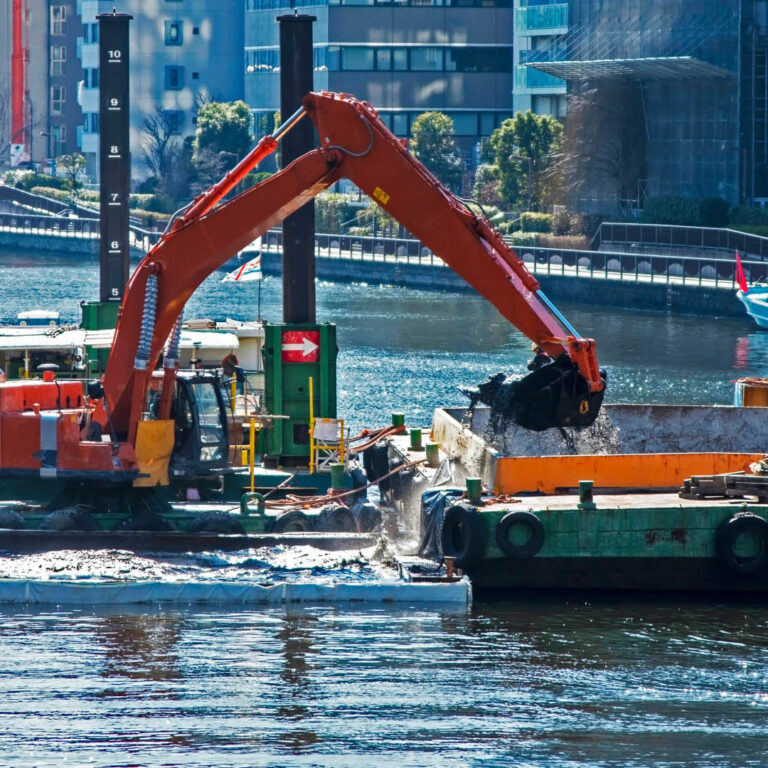Floating Dredge: How It Works and Why It’s Essential for Dredging Projects
Dredging plays a crucial role in maintaining waterways, supporting mining operations, and restoring aquatic ecosystems. Over time, sediment buildup can reduce water depth, create navigational hazards, and disrupt the natural flow of water. Dredging involves removing this sediment and debris to improve water flow, prevent flooding, and protect infrastructure. It also helps maintain shipping channels, restore natural habitats, and extract valuable materials from riverbeds and other water bodies.
A floating dredge is a specialized piece of dredging equipment designed to operate on the water’s surface, supported by pontoons or flotation devices. Unlike land-based dredging equipment, which operates from the shoreline or fixed platforms, a floating dredge offers greater flexibility and mobility. It can access hard-to-reach areas, shallow waters, and deep channels, making it ideal for large-scale and complex dredging projects.
In mining operations, a floating gold dredge is used to extract fine gold particles from riverbeds. Its ability to operate in remote and shallow locations makes it highly effective for gold recovery. Additionally, dredge pipe floats are used to stabilize the discharge pipeline, ensuring smooth and efficient transport of dredged material to the disposal site. This blog will explore how a floating dredge works and why it is essential for maximizing efficiency in dredging projects.
What Is a Floating Dredge?
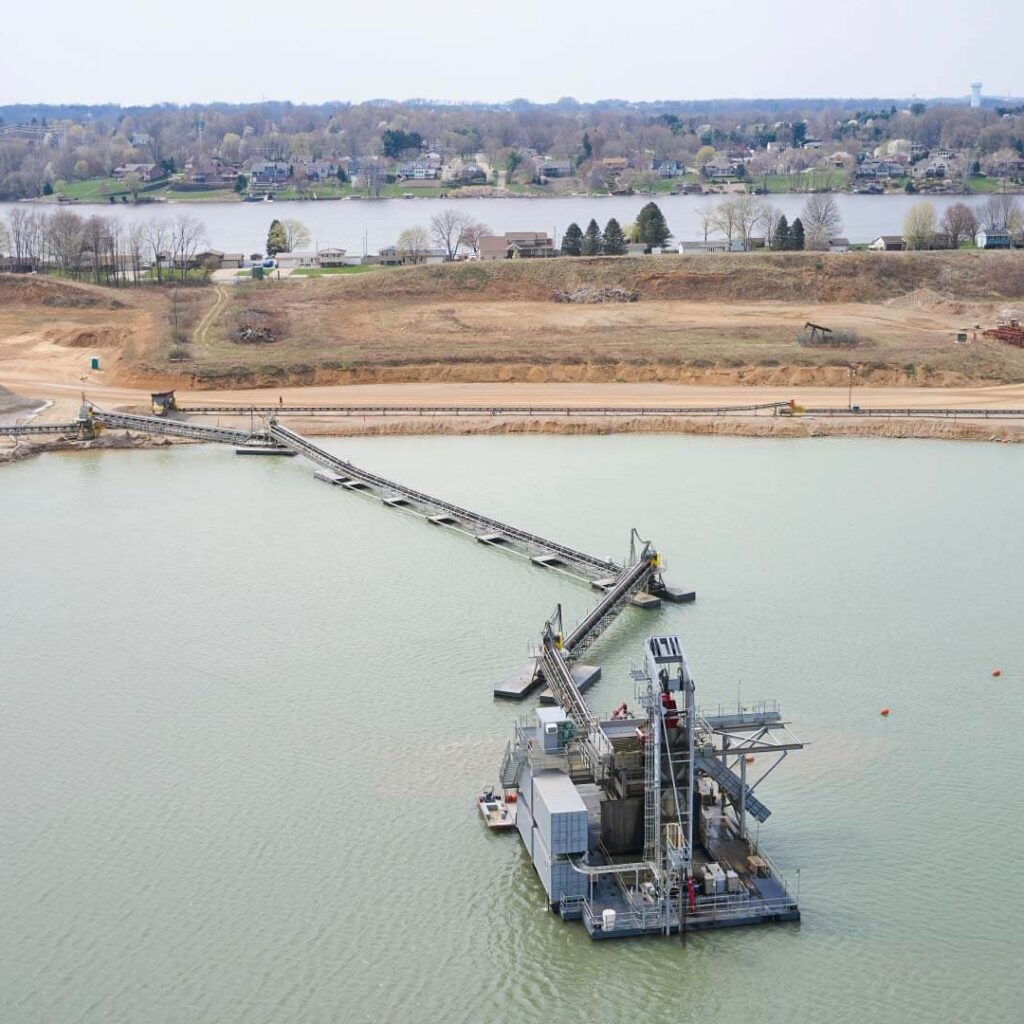
A floating dredge is a specialized machine used to remove sediment and debris from the bottom of water bodies such as rivers, lakes, harbors, and coastal areas. Unlike land-based dredging equipment, which operates from the shore or a fixed platform, a floating dredge works directly on the water’s surface. It is supported by pontoons or other flotation devices, allowing it to remain stable even in deep water or rough conditions. This design gives it the flexibility to operate in a wide range of environments, from shallow ponds to deep shipping channels.
The primary function of a floating dredge is to remove sediment and transport it to a designated disposal site. Extracting silt, sand, and other debris from the waterbed helps maintain proper water depth for navigation and prevents flooding by improving water flow. Floating dredges are also used for environmental restoration projects, such as removing contaminated material and improving aquatic ecosystems.
A key advantage of a floating dredge is its ability to operate in remote or difficult-to-reach areas. For example, a floating gold dredge is designed specifically for mining operations where gold particles are extracted from riverbeds. A floating gold dredge uses a suction system combined with a sluice box to separate gold from sediment, making it highly effective for gold recovery in shallow or hard-to-access locations.
One important component of a floating dredge is the use of dredge pipe floats. These floats keep the discharge pipeline stable and afloat, preventing it from sinking or becoming misaligned. Dredge pipe floats ensure a consistent flow of dredged material from the worksite to the disposal area, improving efficiency and reducing the risk of pipeline damage. They also provide better maneuverability and flexibility when adjusting the pipeline’s position.
The main difference between a floating dredge and a land-based dredger is its mobility and versatility. While land-based dredgers are limited to shoreline access, floating dredges can navigate deeper waters and more complex environments. This makes them essential for large-scale dredging projects, mining operations, and environmental restoration efforts. The ability of a floating dredge to handle a variety of sediment types and site conditions makes it a valuable tool for maintaining and improving waterway infrastructure.
How a Floating Dredge Works
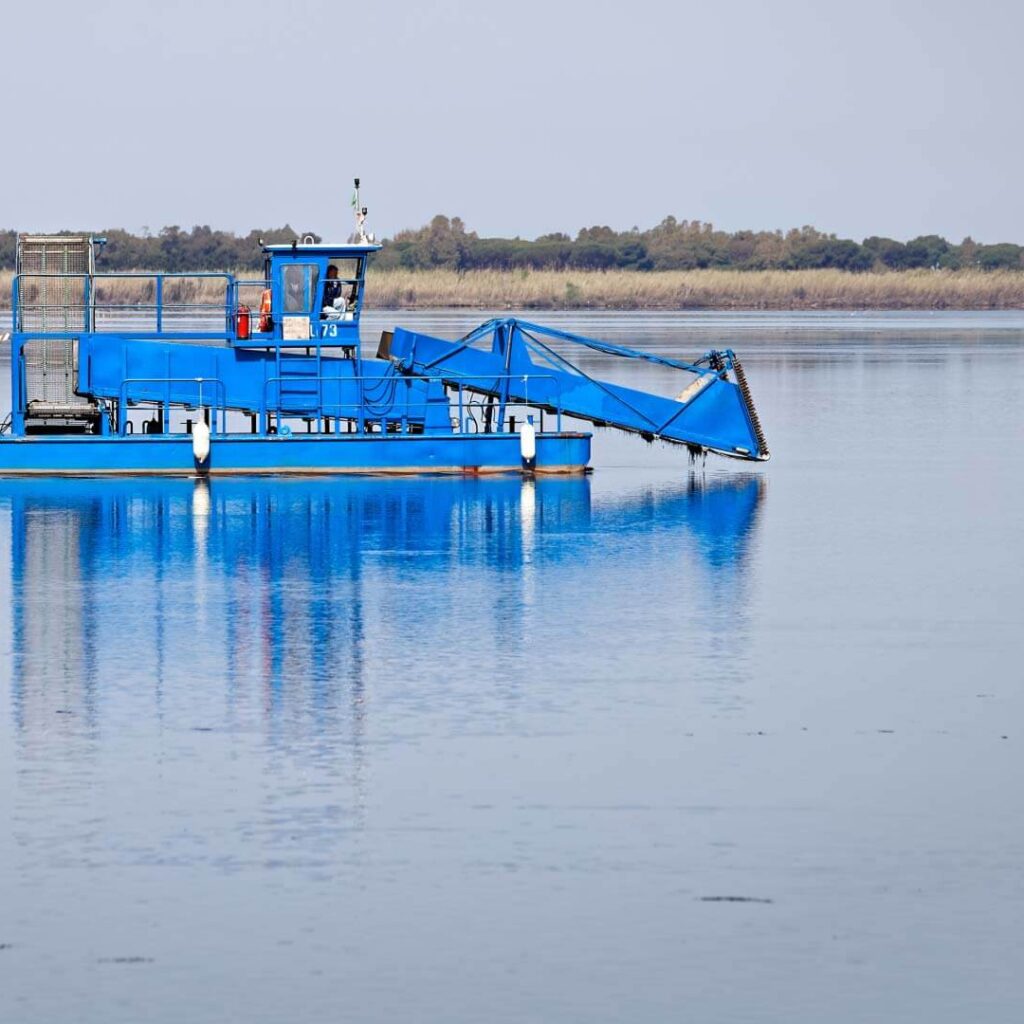
A floating dredge is a highly efficient piece of dredging equipment designed to operate directly on the water’s surface. Unlike land-based dredging systems, a floating dredge remains stable on pontoons or other flotation devices, allowing it to operate in various water depths and site conditions. Understanding how a floating dredge works provides insight into why it’s essential for maintaining waterways, mining operations, and environmental restoration.
1. Setup and Positioning
The first step in any dredging operation is properly setting up and positioning the equipment. A floating dredge is designed to float on the water’s surface using pontoons or other flotation supports, which keep the dredger balanced and stable even in challenging water conditions.
Accurate positioning is crucial for maximizing efficiency and ensuring thorough sediment removal. GPS and sonar technology are commonly used to map the underwater environment and position the dredge for optimal sediment removal. This technology helps the operator determine the precise location and depth of sediment buildup, reducing the risk of missed areas or over-excavation.
2. Sediment Removal Process
Once positioned, the floating dredge begins the sediment removal process. Depending on the type of sediment and project requirements, the dredge may use a cutterhead, suction head, or auger to break up and extract sediment from the waterbed.
The cutter head is particularly effective for compacted or rocky material, while a suction head is better suited for fine sediment like silt and sand. After the sediment is loosened, a powerful pump transports it through a discharge pipeline. The suction rate and sediment removal depth are carefully monitored to prevent over-excavation and ensure even sediment removal.
In mining operations, a floating gold dredge works similarly but is specifically designed to extract gold from sediment. The floating gold dredge uses a suction system combined with a sluice box and riffles to separate fine gold particles from the extracted material. This makes it highly effective for gold recovery in remote and shallow water locations.
3. Material Transport and Handling
A key component in the dredging process is the use of dredge pipe floats. These floats keep the discharge pipeline stable and afloat, ensuring smooth material transport from the dredge to the disposal site. Dredge pipe floats help maintain pipeline alignment, reducing stress and preventing blockages.
Once the sediment is transported through the pipeline, it is deposited at a designated disposal site or processed for reuse. On-site dewatering and material separation may be performed to reduce volume and prepare the material for further use or environmental restoration.
4. Operator Control and Monitoring
A floating dredge requires skilled operation to maintain peak efficiency and minimize environmental impact. Operators use real-time monitoring systems to track dredge depth, suction power, and positioning. This allows for immediate adjustments based on sediment composition and environmental conditions.
Adjusting the dredging speed and cutterhead angle based on the sediment type ensures consistent performance and prevents damage to the dredge. Additionally, operators are responsible for ensuring compliance with environmental regulations and minimizing disruption to aquatic ecosystems. Monitoring systems also track turbidity levels and sediment dispersion, allowing operators to make adjustments as needed to reduce environmental impact.
A floating dredge offers several advantages over land-based dredging systems due to its flexibility and ability to operate in varying water depths. Its ability to transport large volumes of sediment efficiently, combined with the stability provided by dredge pipe floats, makes it a reliable solution for complex dredging projects. Additionally, the specialized design of a floating gold dredge enhances mining efficiency by increasing recovery rates for fine gold particles. This combination of versatility, efficiency, and environmental control makes floating dredges an essential tool for waterway maintenance and resource recovery.
Types of Floating Dredges
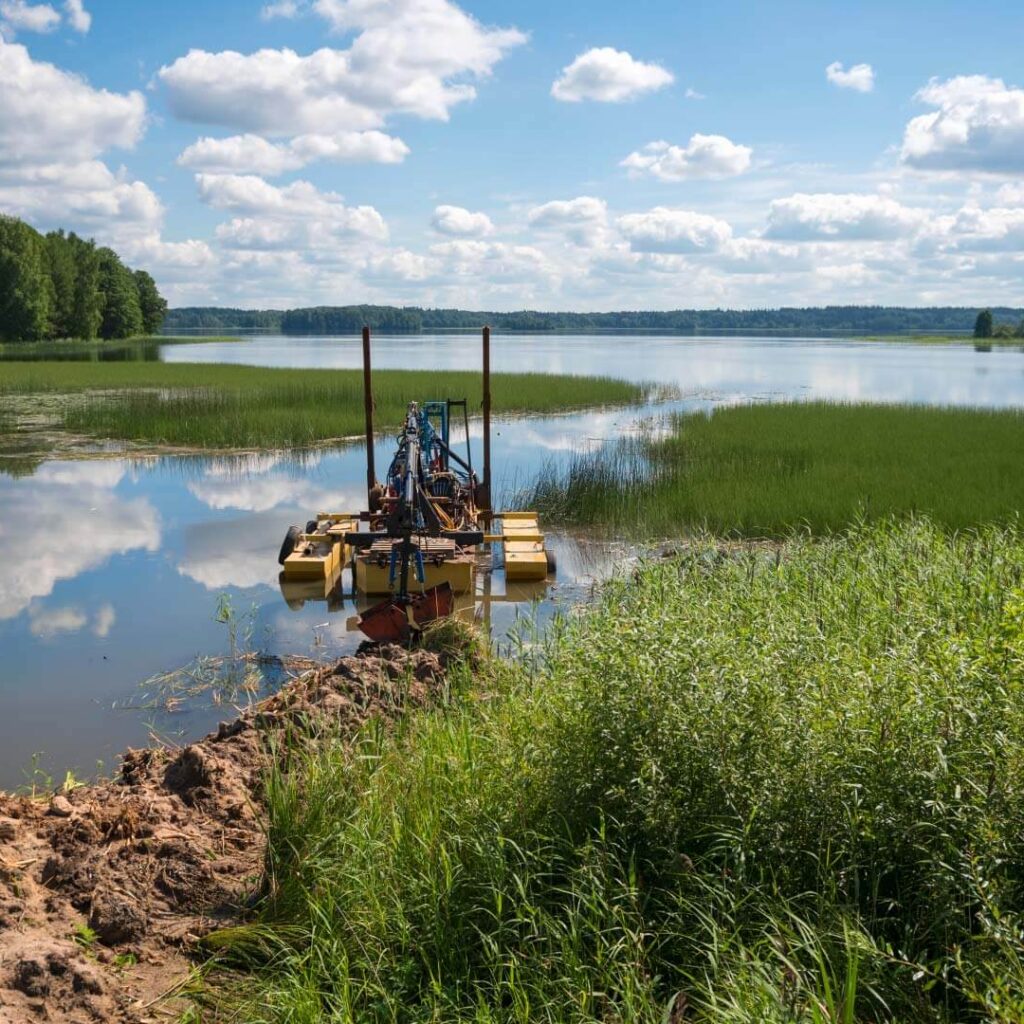
Floating dredges come in different designs and configurations, each suited for specific dredging tasks and environmental conditions. The type of dredge selected depends on factors such as sediment type, water depth, and project goals. Floating dredges are versatile and capable of handling a wide range of materials, from loose silt and sand to compacted clay and gravel. Below are the most common types of floating dredges and their applications.
Cutter Suction Dredge
A cutter suction dredge is one of the most widely used types of floating dredges. It features a rotating cutterhead at the front of the dredge, which breaks up compacted sediment and rock. Once the material is loosened, a suction pump transports it through a discharge pipeline to a designated disposal site.
Cutter suction dredges are ideal for projects involving hard or compacted materials such as clay, gravel, and rock. They are highly effective for port and harbor maintenance, deep-water dredging, and large-scale land reclamation projects. The cutterhead’s ability to handle tough materials makes it an essential tool for heavy-duty dredging operations.
Plain Suction Dredge
A plain suction dredge relies solely on suction to remove sediment without using a cutterhead. This makes it more suitable for loose and fine sediment like sand, silt, and mud. The suction head creates a vacuum that draws the material into the pipeline, where it is pumped to a disposal site.
Plain suction dredges are primarily used for maintenance dredging and environmental restoration projects. Their ability to handle fine sediment with minimal disruption makes them ideal for shallow lakes, rivers, and coastal areas where environmental protection is a priority.
Auger Dredge
An auger dredge features a rotating auger at the front of the dredge, which loosens and gathers sediment. The material is then suctioned and transported through a pipeline for disposal. Auger dredges are known for their precision and ability to operate in shallow or confined areas.
Auger dredges are ideal for environmental dredging and precision work, such as removing contaminated sediment or restoring aquatic habitats. Their controlled operation allows for targeted removal of material with minimal disturbance to surrounding ecosystems.
Floating Gold Dredge
A floating gold dredge is specifically designed for mining operations, particularly for extracting fine gold particles from riverbeds and sediment deposits. This type of dredge uses a suction system to extract sediment, which is then processed through sluice boxes and riffles to capture gold.
Floating gold dredges are highly effective in remote or hard-to-reach mining locations where traditional mining equipment may not be practical. Their ability to handle fine material while efficiently separating valuable minerals makes them a valuable tool for gold recovery operations.
Role of Dredge Pipe Floats
Dredge pipe floats play a crucial role in the operation of all types of floating dredges. They keep the discharge pipeline stable and afloat, allowing for the smooth transport of dredged material from the dredge to the disposal site. Properly positioned dredge pipe floats reduce the risk of pipeline damage, improve material transport efficiency, and enhance overall dredging performance. The stability provided by dredge pipe floats is especially important when working in deep water or rough conditions, ensuring that the discharge pipeline remains properly aligned and operational throughout the dredging process.
Selecting the right type of floating dredge depends on the project’s specific requirements, the sediment type, and the environmental conditions. While a cutter suction dredge is ideal for hard sediment, a plain suction dredge works better with fine materials. An auger dredge provides precision for confined areas, while a floating gold dredge is the top choice for mining valuable materials from riverbeds. The combination of the right dredge type and proper use of dredge pipe floats ensures maximum efficiency and successful project completion.
Conclusion
A floating dredge is an essential tool for maintaining waterways, supporting mining operations, and restoring aquatic ecosystems. It operates on the water’s surface using pontoons or other flotation devices, allowing it to access shallow and deep waters with ease. Floating dredges work by loosening sediment with a cutterhead, suction head, or auger, then pumping the material through a discharge pipeline to a designated disposal site. This process ensures efficient sediment removal, improved water flow, and better navigability.
Selecting the right type of floating dredge is crucial for maximizing efficiency and achieving project goals. Cutter suction dredges are ideal for hard and compacted materials, while plain suction dredges are better for fine sediment. Auger dredges provide precision for confined areas, and floating gold dredges are highly effective for gold recovery in remote locations.
Dredge pipe floats play a critical role in stabilizing the discharge pipeline, ensuring smooth material transport, and preventing pipeline misalignment. For efficient and successful dredging operations, explore floating dredge options to find the best fit for your next project.
